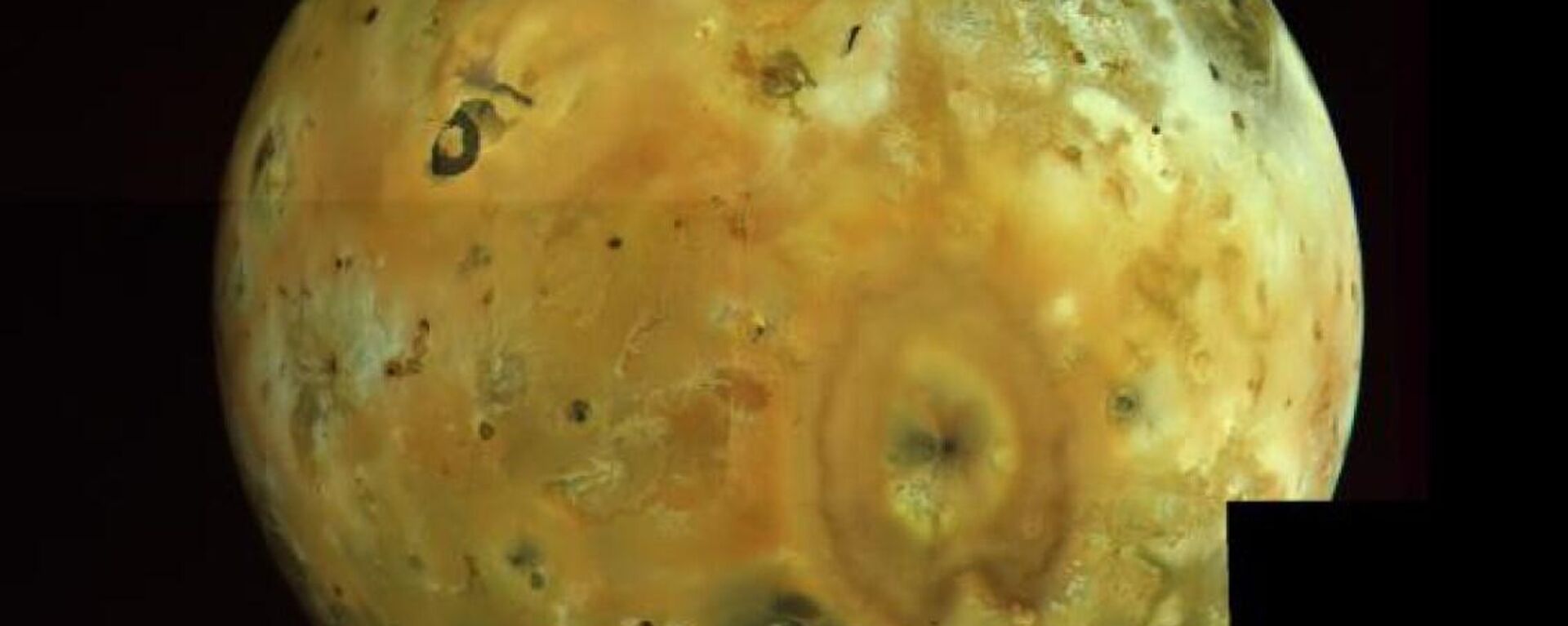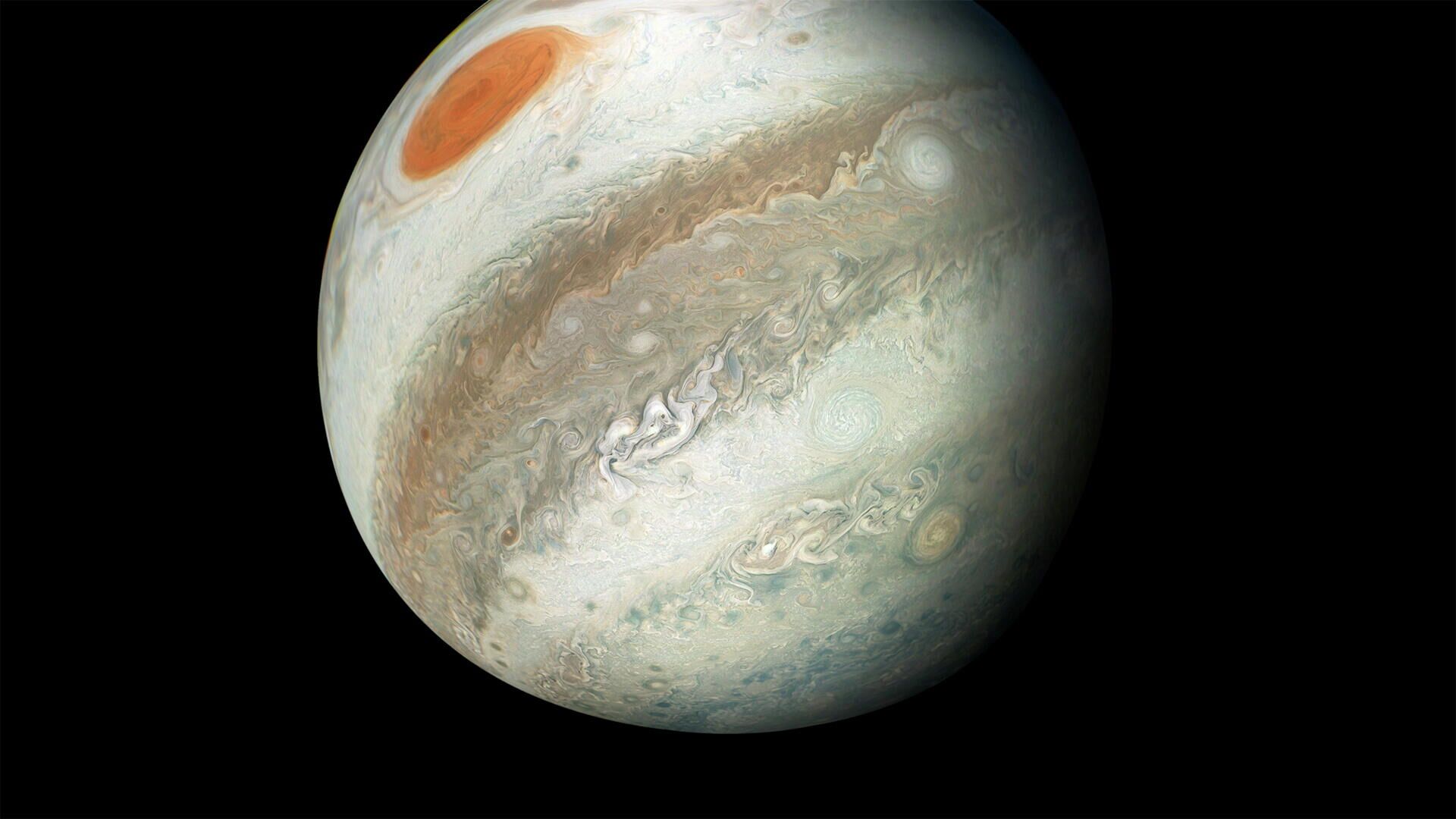https://sputnikglobe.com/20230204/jupiter-eclipses-saturn-in-most-moons-category-after-12-lunar-satellites-discovered-1106966256.html
Jupiter Eclipses Saturn in ‘Most Moons’ Category After 12 Lunar Satellites Discovered
Jupiter Eclipses Saturn in ‘Most Moons’ Category After 12 Lunar Satellites Discovered
Sputnik International
Scientists have identified 12 previously-undiscovered moons orbiting Jupiter, putting the gas giant nine moons ahead of neighboring Saturn, according to newly-published analysis from the International Astronomical Union’s Minor Planet Center.
2023-02-04T04:13+0000
2023-02-04T04:13+0000
2023-02-04T04:07+0000
science & tech
jupiter
moons
discovery
https://cdn1.img.sputnikglobe.com/img/07e5/0a/1c/1090292284_0:0:1920:1080_1920x0_80_0_0_7db01d9ac8ebd15a810f3e015ea6df2a.jpg
Scientists have identified 12 previously-undiscovered moons orbiting Jupiter, putting the gas giant nine moons ahead of neighboring Saturn, according to newly-published analysis from the International Astronomical Union’s Minor Planet Center.Astronomers reportedly found the 12 celestial bodies over the past two years using telescopes in Hawaii and Chile, bringing Jupiter’s total moon count to 92.According to Scott Sheppard of the Carnegie Institution, who participated in the research, the moons range in size from 1 to 3 kilometers. Per the scientist, only those 1.5 km or larger in diameter are likely to ultimately be given names.Sheppard says “the smaller moons probably formed when collisions fragmented larger objects,” a recent report by Sky & Telescope noted.But “while Jupiter may have the most moons for now, Saturn might catch up,” the publication pointed out.The famously ringed planet’s moon count currently stands at 83 — many the probable products of “a collision that disrupted a larger moon a few hundred million years ago,” officials wrote — but the total could increase as astronomers' powers of observation continue to improve.Indeed, a 2021 analysis in the Planetary Science Journal revealed that Saturn’s orbit contained “approximately three times as many irregular moons as Jupiter” with an approximate diameter of 3 km or more.If only counting moons measuring at least 3 kilometers across, “Saturn would have more moons than all the rest of the solar system,” the University of British Columbia’s Brett Gladman claimed.There’s no telling when the ringed planet could overtake its rival, but Jupiter may want to enjoy the moment while it lasts. As telescopic technology continues to improve, it seems the reigning lunar champ could end up relinquishing the title.
https://sputnikglobe.com/20221215/ready-for-my-close-up-nasas-juno-probe-to-fly-just-932-miles-over-jupiters-volcanic-moon-io-1105503721.html
Sputnik International
feedback@sputniknews.com
+74956456601
MIA „Rossiya Segodnya“
2023
News
en_EN
Sputnik International
feedback@sputniknews.com
+74956456601
MIA „Rossiya Segodnya“
Sputnik International
feedback@sputniknews.com
+74956456601
MIA „Rossiya Segodnya“
jupiter, lunar satellites, moons, discovery
jupiter, lunar satellites, moons, discovery
Jupiter Eclipses Saturn in ‘Most Moons’ Category After 12 Lunar Satellites Discovered
Just in time for the new year, a recent spell of lunar luck put Jupiter back on top of Saturn in the race for the most moons.
Scientists have identified 12 previously-undiscovered moons orbiting Jupiter, putting the gas giant nine moons ahead of neighboring Saturn, according to newly-published analysis from the International Astronomical Union’s Minor Planet Center.
Astronomers reportedly found the 12 celestial bodies over the past two years using telescopes in Hawaii and Chile, bringing Jupiter’s total moon count to 92.
According to Scott Sheppard of the Carnegie Institution, who participated in the research, the moons range in size from 1 to 3 kilometers. Per the scientist, only those 1.5 km or larger in diameter are likely to ultimately be given names.
Sheppard says “the smaller moons probably formed when collisions fragmented larger objects,” a recent report by Sky & Telescope noted. But “while Jupiter may have the most moons for now, Saturn might catch up,” the publication pointed out.
The famously ringed planet’s moon count currently stands at 83 — many the probable products of “a collision that disrupted a larger moon a few hundred million years ago,” officials wrote — but the total could increase as astronomers' powers of observation continue to improve.
Indeed, a 2021 analysis in the Planetary Science Journal
revealed that Saturn’s orbit contained “approximately three times as many irregular moons as Jupiter” with an approximate diameter of 3 km or more.

15 December 2022, 22:30 GMT
If only counting moons measuring at least 3 kilometers across, “Saturn would have more moons than all the rest of the solar system,” the University of British Columbia’s Brett Gladman claimed. There’s no telling when the ringed planet could overtake its rival, but Jupiter may want to enjoy the moment while it lasts. As telescopic technology continues to improve, it seems the reigning lunar champ could end up relinquishing the title.


